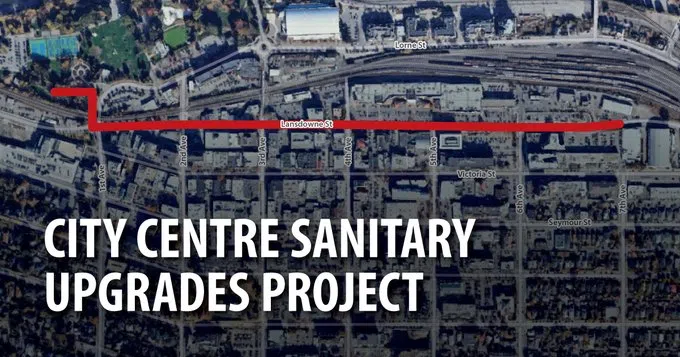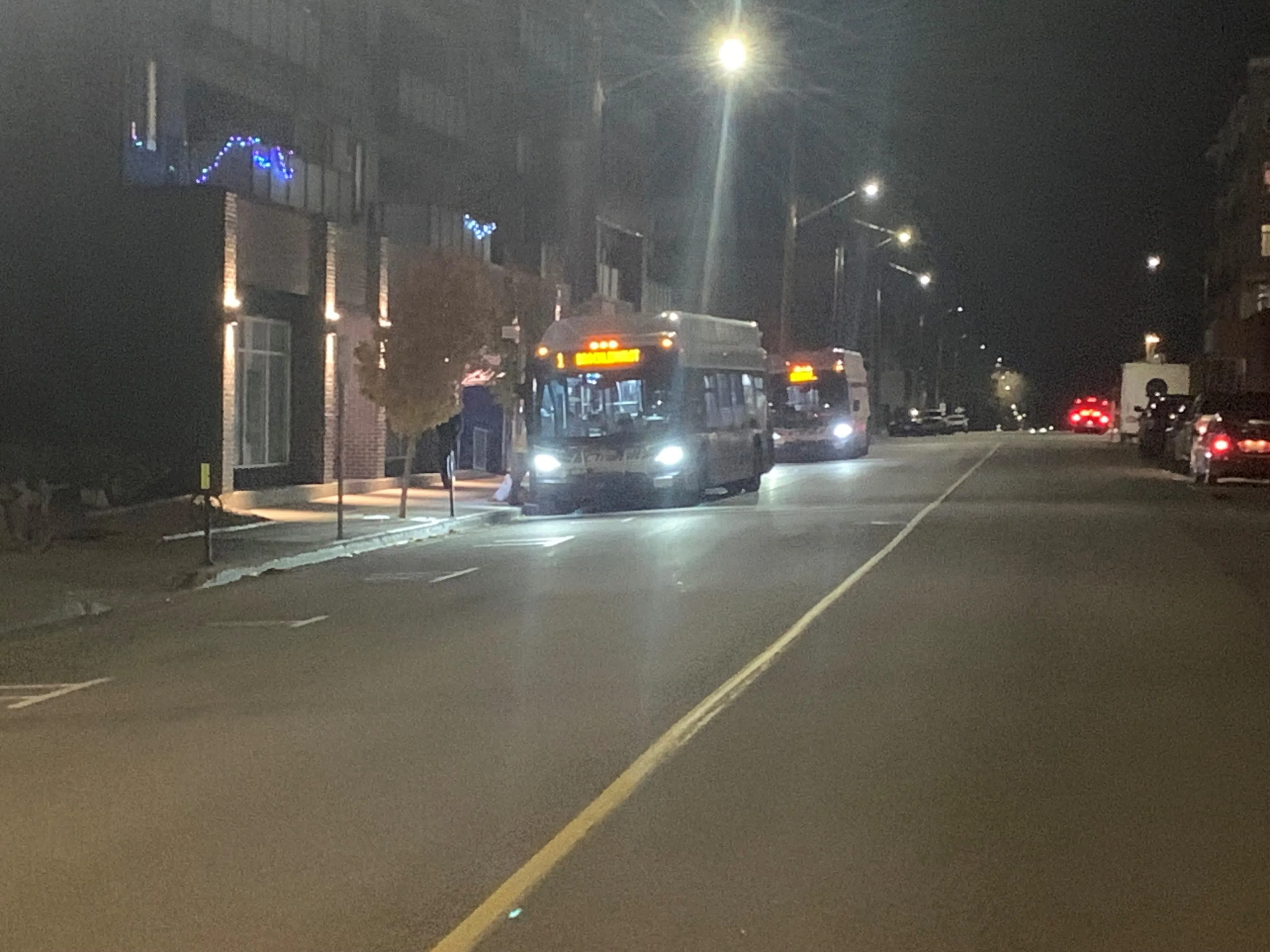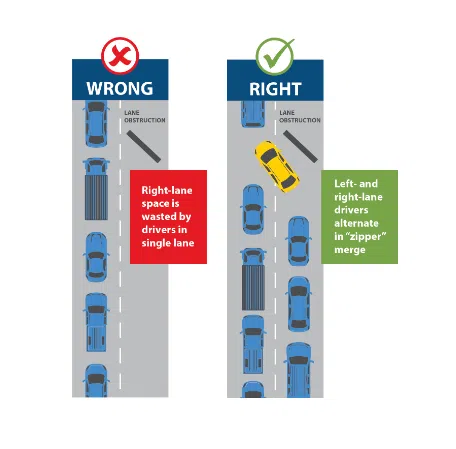
Kamloops drivers are now able to use the entire, uninterrupted stretch of Lansdowne Street through the downtown core, with months-long construction covering five different sections of the one-way, westbound route wrapping up Sunday.
“Extreme Excavating has completed paving along Lansdowne Street. The detour is completed and Lansdowne Street is now fully open to traffic,” said the City in a notification sent out to local businesses and residents in the construction area, which includes Radio NL.
At the same time, those who use the Kamloops transit system downtown are also being advised to revert back to their original commuting habits.
“The Lansdowne Transit Exchange will reopen at 6:00 am on Monday, November 11th, in its original location in Lansdowne Village,” confirmed the City.
“The temporary transit station on St. Paul Street will cease tomorrow [Monday]. The additional litter cans will be collected, the toilet trailer will be removed, and all signage will be returned to normal on St. Paul Street,” noted the City.

Transit buses parked along the 500 block of St. Paul Street in downtown Kamloops, Nov. 10, 2024, the final day of the temporary transit exchange on St. Paul/via Paul James
Residents and businesses along St. Paul will also notice a return to the previous traffic conditions, as well as far fewer people gathering in the normally quiet two block stretch of downtown Kamloops.
“On-street parking will resume on St. Paul Street,” noted the City. “New signage will be placed at the temporary four-way stops along St. Paul Street at 4th and 5th Avenues advising that the stops will be removed, and regular traffic patterns will commence.”
Crews were able to complete the Lansdowne sewar line replacement project slightly ahead of the original November 15th completion deadline.
November 15th is the cut-off date the City has set for municipal crews to wrap up all the road work projects which were launched through 2024.
While the Lansdowne corridor has fully reopened to traffic, which will make it much easier for drivers to access the Overlander Bridge, drivers should still be prepared for some additional delays until the end of November.
“Expect intermittent lane closures over the next couple of weeks while the contractor cleans up the site and finishes any minor work along Lansdowne Street,” cautioned the City.
Traffic headaches lingered throughout project
While crews were able to complete the over half-year project slightly ahead of time, it wasn’t without its struggles.
Most recently, weather forced the City to keep the 5th to 6th Avenue portion of Lansdowne closed as the final phase of the project from 6th to 7th Avenue was being completed.
The initial plan was to reopen the 500 block of Lansdowne when Phase 4 was finished, allowing drivers to turn left onto Lansdowne from 6th Avenue.
However, heavy rains created delays in the repaving schedule, prompting the City change gears and keep Lansdowne closed through the 500 block, meaning an additional two-week extension of the detour around the closed section, which asked commuters use St. Paul Street, followed by 3rd Avenue, to reconnect with Lansdowne.
But due to the closure of the downtown bus loop, St. Paul Street became home to the temporary transit exchange along the 600 and 500 blocks, adding bus traffic to the detour route.
While Phases 2 and 3, which ran from late July to the third week of September, were fairly uneventful, the first phase of the project, from late April through most of May, created some of the biggest challenges.
Some of these issues included access concerns for certain businesses in the construction area, as well as challenges accessing Riverside Park at certain points.
However, the biggest issue was — by far — the significant delays for drivers trying to get too and from the north shore on a daily basis.
To try to minimize the traffic slowdowns through the Lansdowne project, commercial vehicles were ordered to stay out of downtown, told instead to use Summit Drive as a bypass for Lansdowne, which had been the quickest route for commercial trucks hoping to access Mission Flats, including the Kruger Pulp Mill, as well as the Kamloops Airport and other sites on the north shore.
But what’s thought to have been an early lack of awareness did start the Lansdowne project out on a “bad turn,” after a commerical truck clipped a building at 2nd and Seymour while attempting to navigate the detour the City had established around the Phase 1 construction, which was both off-limits, on top of being extremely difficult for tractor-trailers to corner around.
This incident — which caused only minor damage and no injuries — did prompt more traffic control measures from the City, which some say slowed down Overlander Bridge traffic even further as the project got going.
Some estimates suggest the first week to ten days of the month-long first phase added around 30 to 45 minutes of driving time for those trying to access the Overlander Bridge, with many drivers unfamiliar with — or unwilling to use — the “zipper merge” maneuver at the bottlenecks, prompting the City to launch an early campaign to remind drivers of its effectiveness.

Diagram showing the “Zipper Merge” maneuver/via City of Kamloops Lets Talk Page
Compounding the traffic snarls was the Halston Bridge Rehabilitation Project, which — after starting two months late — was no where close to being finished, creating its own set of traffic headaches for those hoping to get too and from North Kamloops via that span.
Construction on the Halston through the Ministry of Transportation and Infrastructure had originally been scheduled to wrap around the same time the City launched the Lansdowne project, but ended up continuing into October.
In the end, the five-phase Lansdowne Street project ran from April 29th to November 10th, 2024.
It replaced the existing sewar line with a larger, updated version to handle the increased capacity from major projects downtown, including the Centre for the Performing Arts, as well as the hundreds of new residents expected to fill the City Gardens development when its first tenants begin moving in next year.
“The entire team would like to thank you all for your patience during this crucial Capital Project to install a sewer main along Lansdowne from 1st Avenue to 7th Avenue,” said the City. “There were many challenges along the way, and while we understand that everything was not perfect, we thank you for your cooperation.”














